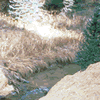
Common nonpoint source (NPS) pollutants found in runoff from urban areas include sediment, nutrients, oxygen-demanding substances, road salts, heavy metals, petroleum hydrocarbons, pathogenic bacteria, viruses, trash, and plastics. Suspended sediments constitute the largest mass of pollutant loadings to receiving waters from urban areas, and erosion during construction is a major source of this sediment. Petroleum hydrocarbons result mostly from automobile sources. Nutrient and bacterial sources include garden fertilizers, leaves, grass clippings, pet wastes, and faulty septic tanks.
With approximately 80 percent of the nation’s population living in coastal areas, controlling polluted runoff in urban areas is a challenge. As population densities increase, a corresponding increase occurs in pollutant loadings generated from human activities. Many of these pollutants enter surface waters via runoff without undergoing any treatment.
The Urban Areas Management Measures address the prevention and treatment of NPS pollution during all stages of development: (1) the siting and design phase, (2) the construction phase, and (3) the post-development phase.
The control of urban NPS pollution requires the use of two primary strategies: the prevention of pollutant loadings and the treatment of unavoidable loadings. Pollution prevention and source reduction practices are favored over treatment practices because conducting education practices and incorporating pollution prevention practices into project planning and design activities are generally more effective, require less maintenance, and are more cost-effective in the long term than treatment strategies. Treatment strategies should be used only to address unavoidable loadings or where they are truly cost-effective.
Descriptions of this land use category and its Management Measures are adapted from California’s NPS Encyclopedia. More Info

Develop a watershed protection program to encourage land use and development planning on a watershed scale that takes into consideration sensitive areas that, by being protected, will maintain or improve water quality. More Info
Limit disturbance and development of natural drainage features and sensitive areas, to reduce erosion and sediment loss, and prepare an effective erosion and sediment control plan. More Info


After construction is complete, reduce total suspended solids (TSS) loadings and maintain post-development peak runoff rate and average volume at levels similar to pre-development levels. Also incorporate pollution prevention procedures into the operation and maintenance of roads, highways, and bridges to reduce pollutant loadings to surface waters. More Info
Prepare and implement an effective chemical control plan that minimizes use of toxic materials, and ensures proper containment if toxic materials are to be used/stored on site. Limit application, generation, and migration of toxic substances; ensure the proper storage and disposal of toxic materials; and apply nutrients at rates necessary to establish and maintain vegetation without causing nutrient runoff to surface waters. More Info


Ensure that OWTSs are located, designed, installed, operated, inspected, and maintained to prevent the discharge of pollutants to the ground surface, surface waters, and to groundwater. Establish protective setbacks from surface waters, wetlands, floodplains, and ground water. More Info
Implement educational programs to provide a greater understanding of watersheds and increase the use of applicable Urban Area Management Measures and practices to prevent adverse impacts to surface waters and groundwater. Public education, outreach, and training programs should involve targeted groups and subjects including households, landscaping, commercial, and municipal activities. More Info
